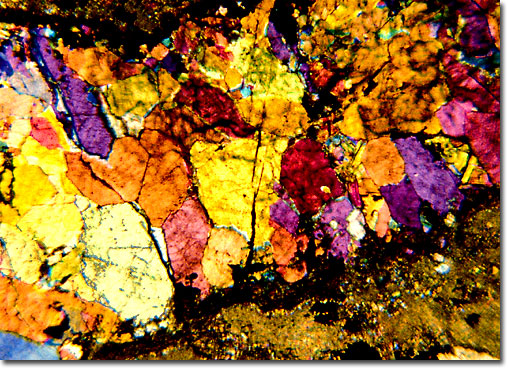Topaz
|
Topaz is a common gemstone that has been used for centuries as jewelry. The stone is one of the hardest minerals, and is the hardest silicate mineral found in nature. A silicate of aluminum, topaz contains about 20 percent water and fluorine. The relative proportions of these impurities are responsible for the color of the stones. Crystals with more water are yellow to brown, while those with more fluorine are typically blue or colorless. The most popular color is a rich orange-yellow, resembling the color of sherry wine. The ancient Greeks believed that the fiery crystal had the power to increase a person's strength and make its wearer invisible in times of emergency. Topaz was also said to change color in the presence of poisoned food or drink. The gem's mystical curative powers waxed and waned with the phases of the moon. When the powdered stone was mixed with wine, it was considered a cure for asthma, insomnia, burns and hemorrhages. Some scholars trace the origin of the word topaz to the ancient Sanskrit word for fire, or tapas, a reference to its fiery orange color. These colors can change when exposed to sunlight and/or heat. Brown topaz can be bleached by sunlight and yellow topaz turns pink to purple-red when exposed to moderate heat. The latter phenomenon was discovered in 1750 by a Parisian jeweler who used it to create the first artificial pink topaz. Nearly all the pink topaz sold as jewelry has been heat-treated. "Burnt topaz" is often known as Brazilian ruby, as is the very rare, natural red topaz. Another artificially created color is blue topaz, discovered in the twentieth century, which takes on a pale to medium blue color after being irradiated. Pale topaz, which is treated to create the blue variety, is found in Brazil, Sri Lanka, Nigeria, and China. In early 1998, yet another new type of radiation-enhanced topaz made its appearance, the surface-enhanced topaz. This variety of topaz has a color that is confined to a microscopically thin layer at and just below the surface, with colors described as blue to greenish-blue or emerald green. Colorless topaz, when brilliant-cut, has often been mistaken for diamond. For years, the Braganza, a famous stone of 1640 carats set in the Portuguese crown, was thought to be the second largest diamond ever discovered. It is now believed to be a colorless topaz. Topaz occurs often in deposits of granite associated with other minerals, but it is also commonly found as rounded pellets in alluvial deposits (e.g., river beds, gravel), the result of being worn down by water and sand for thousands of years. The most notable occurrences are in Minas Gerias, Brazil; Pakistan; San Diego Co, California; the Ural Mountains, Russia; Mexico; and the Thomas Range, Utah. Many gem scholars agree that the tradition of birthstones arose from the Breastplate of Aaron described in the Bible (Exodus 28, 15-30). The breastplate was a ceremonial religious garment set with twelve gemstones that represented the twelve tribes of Israel and corresponded with the twelve signs of the zodiac and the twelve months of the year. There are many different birthstone lists, however, and some argue that they should be assigned by astrological sign and not month. Topaz is the birthstone for November and the zodiac sign Scorpio. |
© 1995-2025 by Michael W. Davidson and The Florida State University. All Rights Reserved. No images, graphics, software, scripts, or applets may be reproduced or used in any manner without permission from the copyright holders. Use of this website means you agree to all of the Legal Terms and Conditions set forth by the owners.
This website is maintained by our
|
